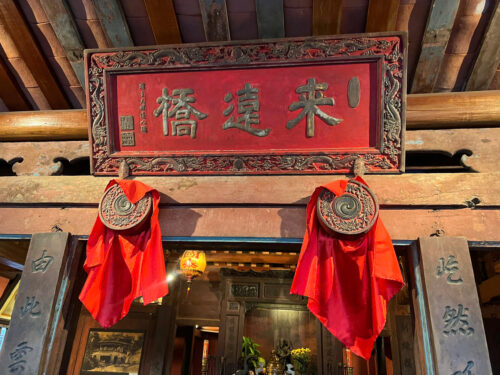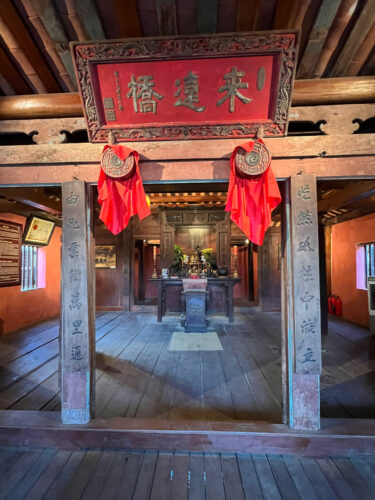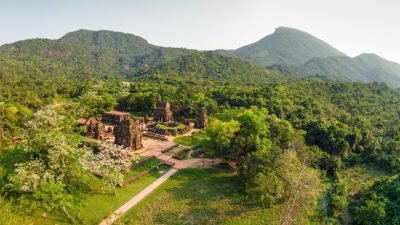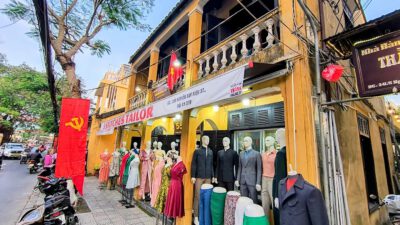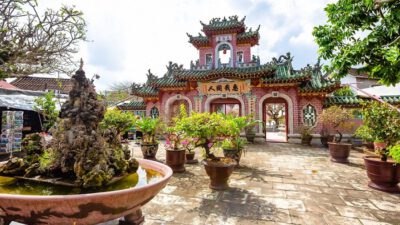The Japanese Covered Bridge (Chùa Cầu), located at the heart of Hoi An Ancient Town, is a more than 400-year-old architectural masterpiece and one of Vietnam’s most iconic cultural landmarks. With its unique design and rich historical value, the bridge attracts countless visitors seeking to immerse themselves in the charm and tranquility of old Hoi An.
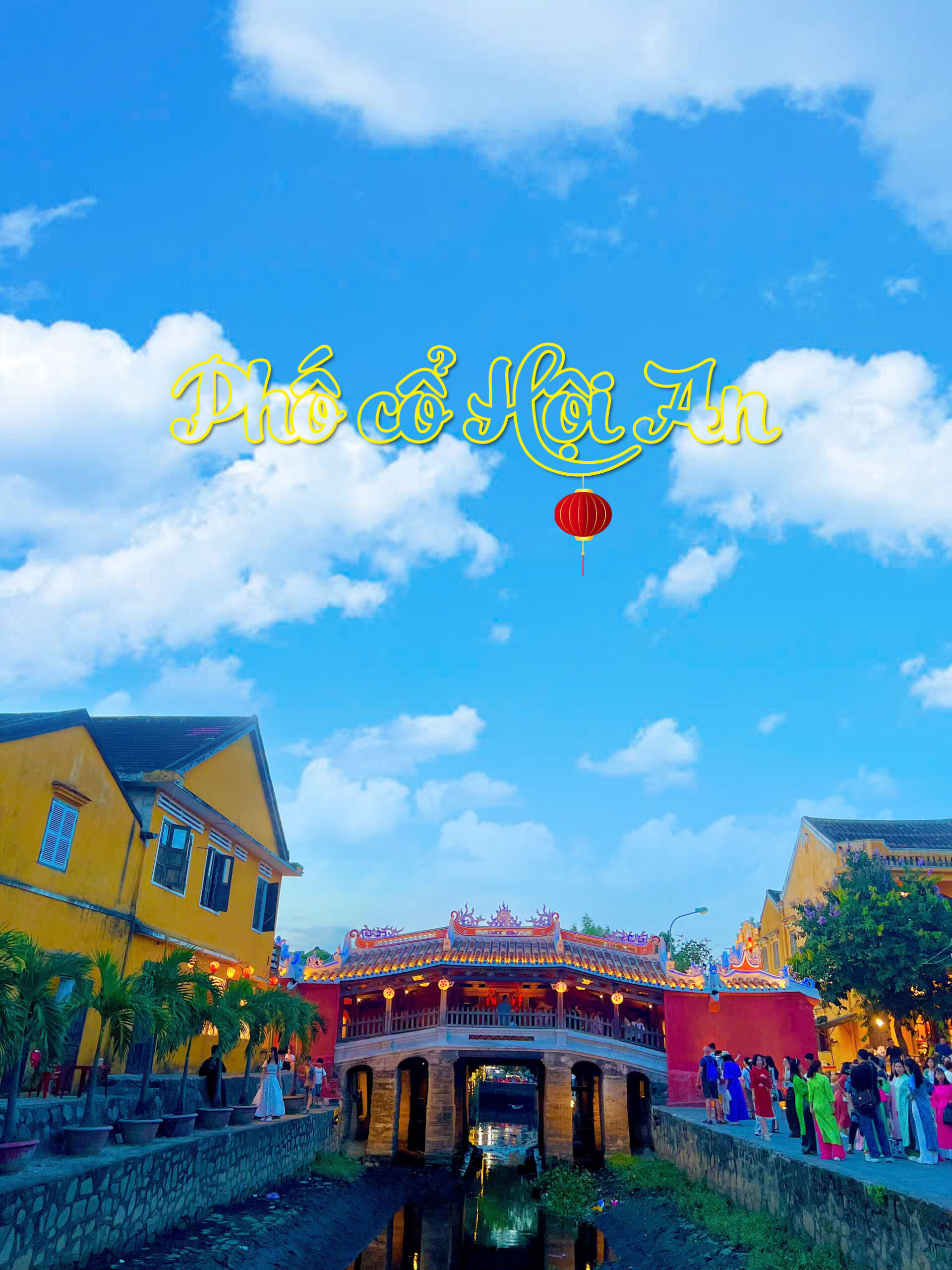
Location and Unique Architecture
The bridge sits on Tran Phu Street, gracefully connecting two sides of a small canal that runs into the Thu Bon River. Measuring approximately 18 meters in length, the bridge is built in the style of “upper house, lower bridge,” featuring a tiled roof above and wooden flooring below. The structure is entirely made of wood, supported by solid stone pillars. Its covered roof and handrails offer shelter from sun and rain for pedestrians.
At the center of the bridge stands a small shrine dedicated to the Taoist god Tran Vo (also known as Xuan Wu), believed to be the guardian of peace and protection for the land. Although called a “temple,” the structure is not Buddhist but instead represents a blend of local spiritual beliefs.
Historical and Cultural Significance
The Japanese Covered Bridge is believed to have been built in the late 16th century by the Japanese community living in Hoi An. Over the centuries, it has undergone several restorations and now showcases a mix of Japanese, Chinese, and Vietnamese architectural influences—making it a rare example of cross-cultural design in Vietnam.
To locals, the bridge is far more than a means of crossing; it is a living memory and a cultural soul of the town. The fact that the bridge is featured on Vietnam’s 20,000 VND polymer banknote speaks volumes about its national significance.
Things to Do at the Japanese Covered Bridge
Visiting the bridge allows travelers to admire intricate wood carvings, curved tiled roofs, and a peaceful setting that contrasts with the vibrant streets nearby. It’s an ideal spot for photography, quiet reflection, or simply taking a break from exploring.
Around the bridge, you’ll find a variety of local experiences including walking tours, street performances, traditional folk games, and a wide array of Hoi An’s local delicacies along the riverbank.
In the evening, the bridge is beautifully illuminated with warm golden lights that reflect off the calm waters below—creating a magical, romantic atmosphere. Many visitors also enjoy a boat ride on the canal to release lanterns for good luck.
Best Time to Visit & Travel Tips
The best time to visit Hoi An and the Japanese Covered Bridge is between January and March, when the weather is dry and cool. Early mornings or late afternoons are ideal to avoid crowds and heat. If possible, plan your trip around the full moon (14th day of the lunar month) to experience the vibrant lantern festival in the Old Town.
Entrance to the ancient town (including the bridge and several other historical sites) requires a ticket: 80,000 VND for Vietnamese visitors and 120,000 VND for foreigners. Tickets can be purchased at booths near the main entrances. Note that motor vehicles are restricted in the old town during most hours, so comfortable walking shoes are highly recommended.
Visitor Etiquette at the Bridge
- Dress modestly and respectfully.
- Keep noise levels down and avoid pushing or crowding.
- Do not write on or damage the structure.
- Respect the spiritual space inside the shrine.
Whether you’re a history enthusiast, a culture lover, or simply a traveler in search of beauty, the Japanese Covered Bridge in Hoi An offers a truly memorable experience. Take a moment to walk its wooden floor, gaze at its historic architecture, and connect with the spirit of this ancient port town—a timeless gem of Vietnam.



